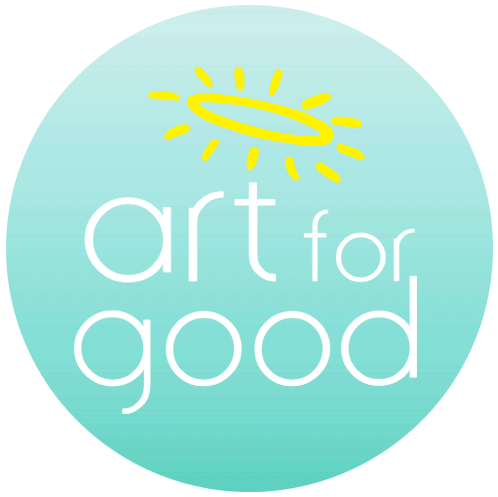Author: Cathy Malchiodi – PhD
During the past decade, we have just started to learn about the effects that the expressive arts (music, movement, dance, visual art, drama, and performance) have on the brain.
Some of those effects come directly from the arts’ influence on the reward circuitry in the brain. For example, playing music or even listening to a favorite song stimulates the release of dopamine, a brain chemical that increases a sense of positivity and pleasure.
Numerous studies now support the arts’ ability to elevate mood simply through the experience of creation and self-expression, witnessing artworks in a museum, or attending a theatrical or musical performance.
A 2020 study (Cigna, 2020) found that there has been a rapid increase in the perception of loneliness, with three out of five Americans now identifying as lonely. It is widely accepted that social isolation and loneliness negatively impact emotional and physical health, increasing the risk of mortality as much as smoking or obesity. In particular, this experience is prevalent in older adults who may be socially isolated, retired from the workplace, lost loved ones, and/or have reduced contact with family members due to distance or inability to travel.
Because social isolation has a profound impact on health, the International Arts + Mind Lab (IAML) at Johns Hopkins Brain Science Institute (Decker, 2020) has created a helpful synopsis of recent evidence about the arts and the “social brain.” While we think of expressive arts as individualized experiences, according to IAML, they also can trigger social engagement circuits in the brain.
In brief, IAML’s report indicates that there are a variety of ways the arts help individuals of all ages feel less alone. Obviously, when experienced within the context of a group, making art, participating in theatrical performance, or creating something together has the potential to reduce the sensation of loneliness in mind and body. But some art forms may naturally hold more potential to rapidly induce the experience of social bonding and connection necessary to mediate loneliness.
Of all the arts, music possibly has one of the strongest impacts on the social brain. For example, it activates the fronto-median cortex associated with social cognition almost automatically. It also supports synchrony and social bonding through the release of endorphins during interaction with music, whether passively listening or participating in singing (Tarr et al., 2014). Group singing has multiple benefits, including the reduction of depression, particularly in older adults.
In most cases, actual participation in art creation has a more robust impact on the social brain. But simply experiencing the arts in some way measurably reduces loneliness.
One large study (Tymoszuk et al., 2019) demonstrates that exposure to various arts venues (galleries, exhibitions, or museums) every couple of months reduces feelings of loneliness by 26 percent compared with those individuals who do not visit these venues. Attending live theater or concerts reduces loneliness even more; all these outcomes are independent of social, economic, and demographic factors.
So, what are the actual mechanisms found in arts engagement that help us feel less alone in the world? According to the Baring Foundation (Cutler, 2019), an organization in the United Kingdom working to end loneliness, there are two simple factors: contact with new people and the formation of new friendships that result in less isolation.
Those of us in the field of expressive arts therapy know that there is something more at work here that decreases loneliness. It’s the pleasurable, enlivening, sensory-based nature of these experiences that replaces personal narratives of isolation, depression, and hopelessness in mind and body (Malchiodi, 2020). Otherwise, gathering for a game of Bingo or a movie night would be just as effective.
The IAML notes that additional research is needed to isolate these mechanisms. As we increase our understanding of arts engagement, in all its various forms, we will undoubtedly identify just how to tailor and possibly “prescribe” expressive arts to tap the social brain.
Link to the original article to explore more!
References
- Cigna. (2020). Loneliness is at epidemic levels in America. Retrieved on February 26, 2020 at https://www.cigna.com/about-us/newsroom/studies-and-reports/combatting-…
- Decker, E. (2020). The arts can liberate us from loneliness. Retrieved on February 20, 2020 from https://www.artsandmindlab.org/arts-liberate-from-loneliness.
- Cutler, D. (2019). Tackling loneliness in old age– the role of the arts. London: The Baring Foundation.
- Malchiodi, C. A. (2020). Trauma and expressive arts therapy: Brain, body, and imagination in the healing process. New York: Guilford Publications.
- Tarr B, Launay J & Dunbar RIM (2014). Music and social bonding: “self-other” merging and neurohormonal mechanisms. Frontiers in Psychology. (5) 1096. doi:10.3389/fpsyg.2014.01096.
- Tymoszuk, U., Perkins, R., Fancourt, D. et al. (2019). Cross-sectional and longitudinal associations between receptive arts engagement and loneliness among older adults. Social Psychiatry & Psychiatric Epidemiology. https://doi.org/10.1007/s00127-019-01764-0



 Amanda Chen
Amanda Chen